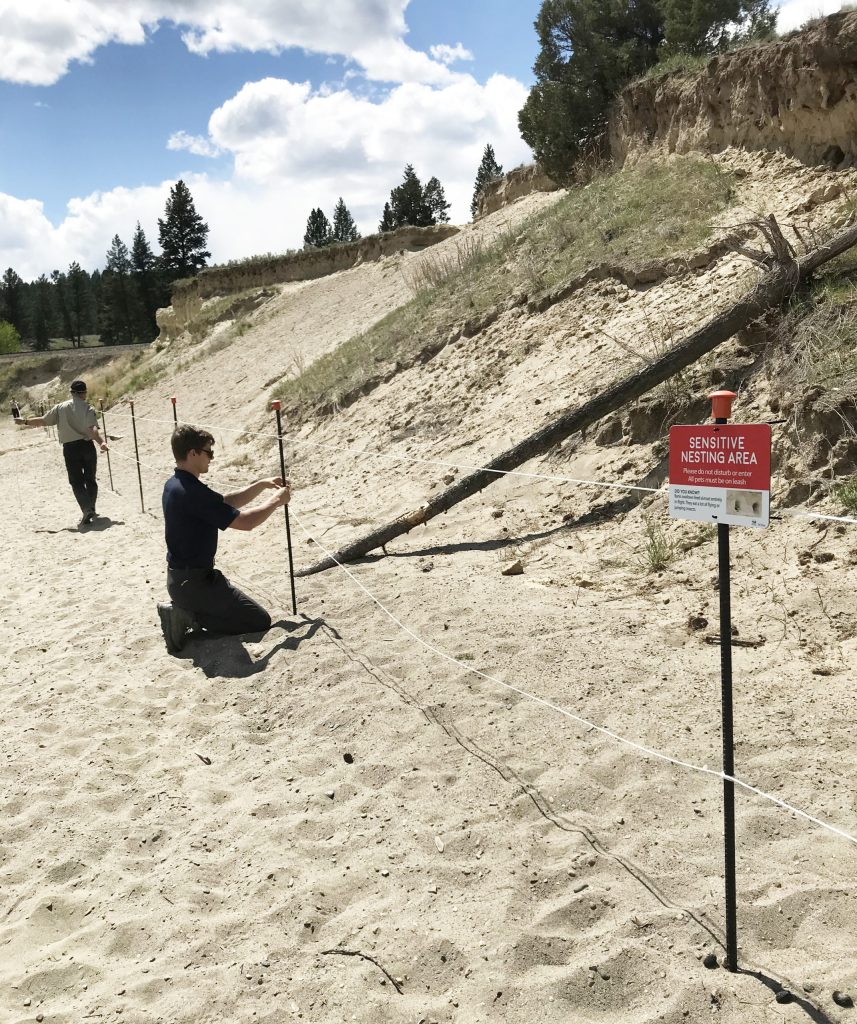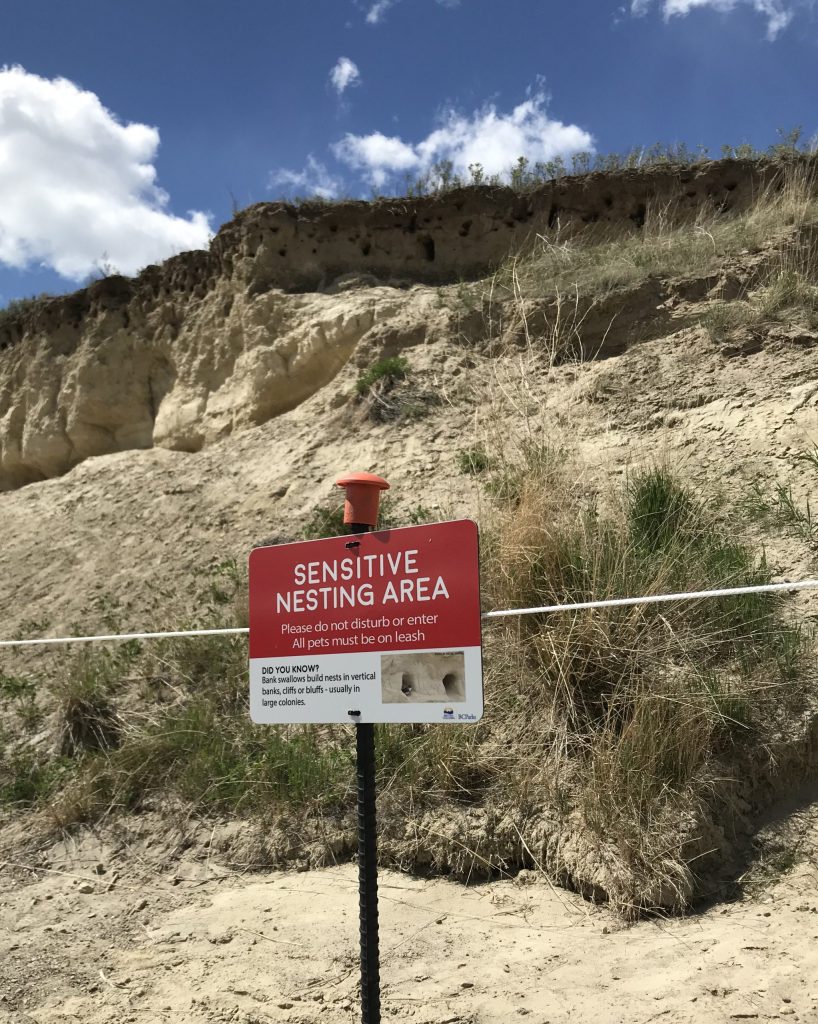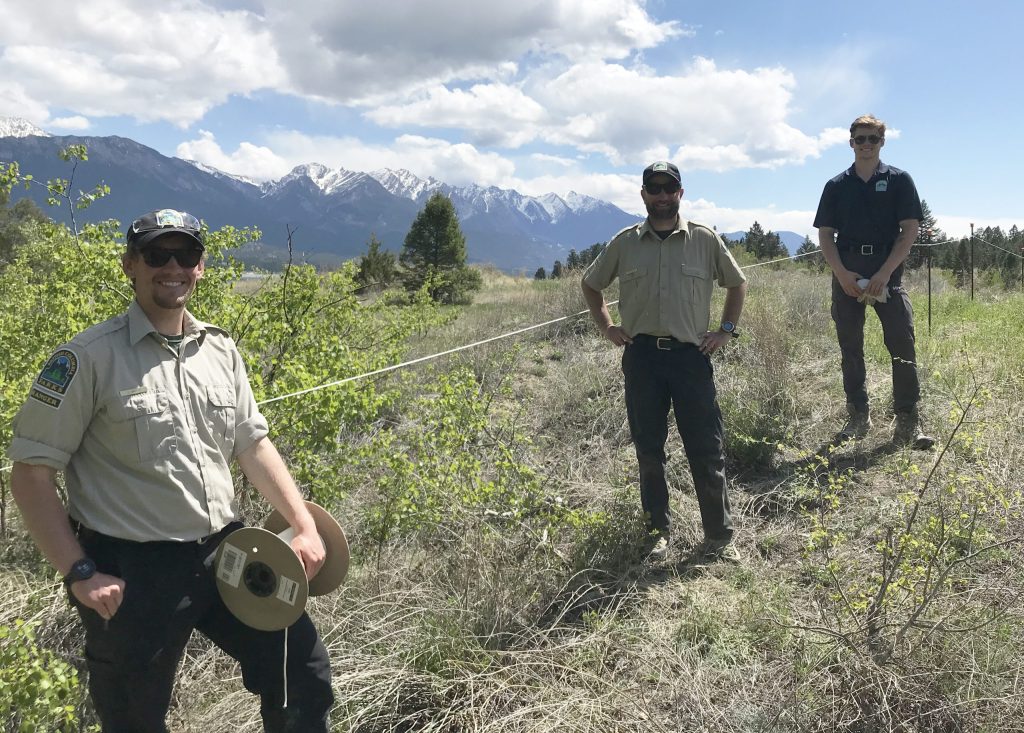Bank swallow habitat being protected in Windermere Lake Park
Categories:
When a colony of bank swallows was discovered nesting in a sloped sandy bank in Windermere Lake Provincial Park two years ago, Amanda Weber-Roy was tingling with excitement.
The number of bank swallow colonies has been declining in Canada at an alarming rate. Discovering a few pairs of threatened species in a park meant the bird’s sensitive habitat could be protected. But the sloped sandy bank is also a popular area for boaters, creating a challenge for people and birds wanting to share the same space.
“People will go up there and slide on the sand and run up and down the bank, poke things in the holes that are the burrows the birds breed in,” said Weber-Roy, a conservation specialist with BC Parks. “This colony is extremely significant because it’s in a provincial park. We should be protecting their habitat.”
According to Weber-Roy, bank swallows have experienced an estimated 98% decline in Canada in a recent 40-year period. Reasons for the significant decline are not well understood, but they are thought to be cumulative, including loss of breeding and foraging habitat, collisions with vehicles, widespread pesticide use, climate change and destruction of nest sites.
The colony in Windermere Lake Park was discovered in 2020 by the Upper Columbia Swallow Habitat Enhancement Project’s program biologist Rachel Darvill. The initiative, led by Wildsight Golden, was to locate, enhance and conserve bank and barn swallow nesting locations in the Columbia Valley. Around 135 swallow colony sites in steep friable soils were located and 96 were confirmed as active bank swallow colonies. Several larger colonies were found on the Akisqnuk First Nation located directly across from the park.
Since the bird’s discovery in Windermere Lake Park, BC Parks has installed a physical barrier around the breeding colony, de-activated a trail that went through the breeding habitat, and put up regulatory and interpretive signage to educate people about the significance of the colony. Student rangers and park rangers have also been patrolling the site, along with Lake Windermere Ambassadors to help monitor the bank swallows and educate the public.



In July, a Motus wildlife tracking station was installed in the park to determine the bird’s breeding and migratory movements, and to learn more about their local behaviours. The tracking station is part of a network of stations set up by Environment and Climate Change Canada’s wildlife service, working to evaluate migratory connectivity for bank swallows throughout Canada. Fifty bank swallows found in the Columbia Valley were banded and fitted with Motus tags that can be picked up by a tracking station up to 15 kilometres away.
Weber-Roy is eager to see whether the tracking station will provide any clues about bank swallow’s sharp population decline. She’s also eager to see whether more bank swallows will come to the area if it isn’t being used by people.
“We’re hoping that the station will give us more indication of where they winter, how long they stay in the park and where they go to eat,” said Weber-Roy, noting the burrows in Windermere Lake Park are also used by other bird species. “This is a sensitive site that needs to be protected year-round and we will need to monitor it for several years. There are other beach opportunities on the lake for people to enjoy.”
The project is being supported through the BC Parks Licence Plate Program. During the last five years, BC Parks has spent nearly $700,000 on conservation measures to reduce visitor impacts in provincial parks, such as wildlife monitoring in areas with high visitation, researching the impacts of bear viewing activities on bear behaviour, installing structures like toad crossings, boardwalks and fencing, and adding educational information. For more information about the BC Parks Licence Plate Program visit https://bcparks.ca/licence-plates/





